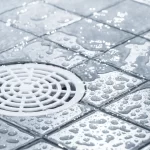Most people realize the importance of getting a home plumbing inspection before they buy a home. The condition of the plumbing system can seriously impact the value of the property, and nobody wants to buy a home that is going to require costly repairs.
Inspections are an important part of maintaining the plumbing system.
For a home buyer in Toronto, the need is obvious, but many people fail to grasp the importance of regular plumbing inspections for the home they currently live in. Our Toronto plumbers know inspections are an important part of maintaining the plumbing system. Many of the most common problems with a home’s plumbing system will start out small and be almost unnoticeable. As time goes by, the problem gets worse, and eventually it is a major problem.
Scheduling a routine inspection is a great way to avoid these problems. When you get an experienced plumber to check your home out, they can find these small issues before they turn into a catastrophe. By getting them fixed early, you can save money on the repairs, and you can avoid problems with water damage or the potential for a plumbing failure that occurs at the most inopportune time.
While plumbing inspections are a good preventative step, you do want to make sure to hire a licensed downtown plumber for all of your inspections. Read on to learn more about what you can expect from an inspection performed by a professional plumber.
Check All Fixtures
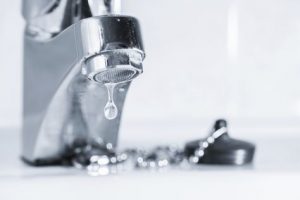 One of the first points in a plumbing inspection will be to check all of the fixtures in the home. This includes all of the toilets, showers and tubs, sinks and any outdoor spigots. This will be to check the function of each fixture and to see if there are any obvious problems.
One of the first points in a plumbing inspection will be to check all of the fixtures in the home. This includes all of the toilets, showers and tubs, sinks and any outdoor spigots. This will be to check the function of each fixture and to see if there are any obvious problems.
The plumber will flush each toilet to see how well it performs, they’ll be looking at:
- How strong the flush it
- How well the toilet drains
- Any leaks that might be as a result of seals failing
- How quickly the tank fills
- Depending on the complexity and overall condition of your toilet, specific components may need inspection as well
At the showers and tubs the plumber will:
- Check water pressure run the water to check the pressure
- Check both the hot and cold water to ensure that they are working correctly
- Examine how well the showers and tubs drain
- Make sure that there are no leaks from the tub faucet or showerhead
At the sinks, the plumber will go through a similar protocol for the showers and tubs:
- Run both hot and cold water to assess function
- Make sure there are no leaks present
- Inspect the drain and make sure it is draining properly
- Take a look at the supply and drain lines to insure no leaks
At this point, the plumber will have a good idea of how well the fixtures are operating in your home and will be able to suggest upgrades or repairs as needed.
Inspect Hot Water Heater
The water heater is probably one of the most important parts of a plumbing inspection. This inspection can even save you money so it’s a great area to have working properly. The replacement or repair of a water heater can be expensive, but if the problems are caught early, you can usually keep the repair costs down. As an additional point, a faulty water heater can be more than just a practical problem. There are some water heater problems that can be a hazard to the health or safety of the people living in the home.
The inspection protocol will change depending on whether it is electric or gas.
It is important to point out that there are different types of hot water heaters. The inspection protocol will change depending on whether it is electric or gas. Regardless of whether your water heater is electric or gas, one of the first points to check is whether the machine is producing hot water. After that, the plumber will look for signs of corrosion.
While inspecting the water heater, the plumber should check:
- The shutoff valve and the pressure relief valve
- The flue should be inspected
- All gas or electrical connections to the unit should be checked to ensure they are in good condition and no leaks are present
- Check for any unusual noises that come from the unit when it is in operation, that might be a sign it is damaged
- Carbon monoxide leaks will also be checked – carbon monoxide is a dangerous, odourless gas that is incredibly dangerous
As I mentioned before, the protocol will largely depend on the type of water heater in the home. This is an important part of the inspection because it not only ensures that your hot water heater is ready to supply hot water as you need it, it can also protect your family from carbon monoxide and dangerous gas leaks.
this can save you money
Older water heaters have a greater potential for tank leaks, and this could result in basement flooding. As a final point, the inspection also ensures the efficient operation of the machine, and this can save you money on your utility bills.
Inspecting All Lines
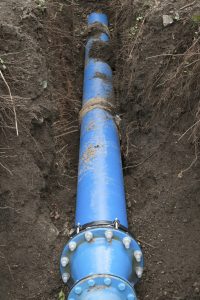 A thorough plumbing inspection should also include an inspection of the supply lines and the drains. Depending on the needs or requests of the homeowner, this could just be a visual inspection of the exposed pipes in areas like the basement or crawlspace. However, the plumber could also use a fiber optic camera to inspect lines in places that are harder to access.
A thorough plumbing inspection should also include an inspection of the supply lines and the drains. Depending on the needs or requests of the homeowner, this could just be a visual inspection of the exposed pipes in areas like the basement or crawlspace. However, the plumber could also use a fiber optic camera to inspect lines in places that are harder to access.
Lead supply lines can be harmful to the health of people in the home
One of the first points that the plumber will look for is the types of lines that are run in your home. In some older homes, they light look for things like lead pipes or galvanized pipes. Lead supply lines can be harmful to the health of people in the home, so the plumber would recommend replacement. In many cases, a plumber will also recommend the replacement of galvanized pipes because they are prone to corrosion.
Most modern homes would have copper or plastic PEX lines for the water supply. These materials would not usually be indicative of any problem, and replacement would only be recommended if some type of damage or leakage were identified. The only exception to this would be if the plumber were to identify the PEX as being from a brand that has been recalled, such as Kitec plumbing.
Beyond assessing the materials from which the pipes are made, they will inspect the lines for signs of corrosion and leaks. They will look at all of the joints to ensure that there are no signs of leaks, and they will also go to any connection points to inspect for leakage or corrosion. While inspecting the lines, the plumber will also inspect any shutoff valves to ensure there are no leaks and make sure they still work.
Drain & Sewer Inspection
Along with checking all of the supply lines, the plumber should also perform a thorough inspection of the drains. The drain inspection will start with the plumber simply checking the function of various drains in the home, and then they will move on to performing a visual inspection of the drains to look for things like leaks in the line.
This inspection typically includes:
- Checking the drain function at various fixtures in the home
- Checking drain lines for any leaks
- Inspecting the lines for any blockages or damaged lines
- Check the drains on the interior of the home
- Check the lateral connection to the municipal sewer
A thorough drain inspection will include the use of a fiber optic drain-inspection camera. This tool can be run down the drain line to look for any damage to the line, and it can also be used to find any blockage that may be in the line. With the drain camera, the plumber can find things like cracks, tree roots that have grown into the line, obstructions and collapsed lines.
The camera inspection is another important part of the plumbing inspection. Many of these drainage problems start long before they become apparent to the homeowner. As time goes by, the problem gets worse, until one day, your drains no longer work and you need expensive repairs. A skilled plumber will be able to catch these problems using a drain camera, and this could save you a lot of money by giving you the option to repair the drain early.
Check The Appliances
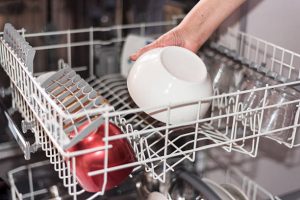 When appliances like the washing machine or dishwasher have problems, they can cause flooding and water damage. Checking these appliances should be a part of any plumbing inspection. If you have a refrigerator with an icemaker or a water dispenser, that should also be included in the inspection checklist.
When appliances like the washing machine or dishwasher have problems, they can cause flooding and water damage. Checking these appliances should be a part of any plumbing inspection. If you have a refrigerator with an icemaker or a water dispenser, that should also be included in the inspection checklist.
At the dishwasher, the plumber is going to want to check the water supply line and the drain connection. They’ll check the lines for any damage and make sure the connections are secure. They should also check the intake valve, and they might inspect the filter.
In checking the washing machine, the plumber will look at the hoses that connect to the water supply, and they will also check the drainage. They will check the hoses for any signs of wear and for leaks, and they will also check the connections to make sure they are secure.
If you have a refrigerator that is connected to the water supply, the connections and the lines will need to be inspected. If you have been having problems with the lines to the icemaker, they might look to see if the lines are freezing.
Backwater Valve & Sump Pump Inspection
While inspecting the home, the plumber should also check your backwater valve and your sump pump. Both the sump pump and the backwater valve are there to protect your home from flooding. If either one of them has a problem, it could put your home at serious risk for water damage.
Backwater valves keep your basement sealed from potentially overflowing city sewers.
The backwater valve is designed to allow sewage and other wastewater to run out into the lateral while prohibiting the reversal of the flow. This keeps this nasty water from backing up through the drain and into the home. The plumber will perform a visual inspection to look for any signs of damage or malfunction. They’ll also open the cleanout to look for signs of blockage and to inspect the gate.
Sump pumps pump water away from your home.
Your sump pump is a self-actuating pump that works to remove water from the basement. If you have a French drain, it might also be used to pump this water away from the home. Basically, the sump has a pit where the water collects, and when it rises to a certain level, the float arm turns on the pump to remove the water.
There are several points that a plumber may need to inspect when checking a sump pump.
- Check the basic function of the pump by dumping some water in the pit
- Check the intake screen to make sure it is clear
- Check the discharge line for signs of blockage.
If the sump pump needs to be cleaned, the plumber can usually do that for you.
home owners in need can save some money
In the City of Toronto, home owners in need can save some money via basement flooding rebates that they may be eligible to claim if they require a sump pump or backwater valve.
Water Pressure Test
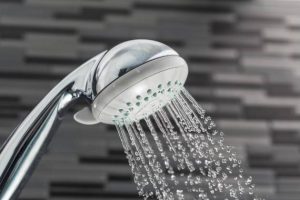 The plumber may also test the strength of the water pressure in the home. Low pressure is a common problem in some homes, but there could also be problems associated with pressure that is too high. By testing the pressure on the lines, this can help the plumber to identify problems with the plumbing system.
The plumber may also test the strength of the water pressure in the home. Low pressure is a common problem in some homes, but there could also be problems associated with pressure that is too high. By testing the pressure on the lines, this can help the plumber to identify problems with the plumbing system.
Low pressure could be an indication that there is a leak or an obstruction in the supply lines
The plumber will usually perform the pressure test in a few steps:
- Turning off all of the fixtures that are connected to the water supply
- Closing all of the shutoff valves
- Locate the spigot or faucet that is closest to the water meter
- Attach a pressure gauge to this outlet and turn on the water
As long as no other fixture or appliance is drawing water from the supply, the gauge should give an accurate reading of the water pressure.
Low pressure could be an indication that there is a leak or an obstruction in the supply lines. If the pressure is too high, this could indicate that there is a problem with the pressure regulator. Either way, it is an indication that repairs are needed. You certainly do not want to leave lines leaking or obstructed, and the high pressure that results from a faulty regulator can damage water lines, fittings and appliances.





